The Chinese Navy goes one step higher for naval dominance
Back in April 2017, a brand new massive aircraft carrier was launched. That’s not everyday it happened. Symbol of the times, it’s Chinese. Still unnamed, it was built at Dalian. The PLAN (Popular Liberation Army Navy) is already, since a few years, rated as the world’s third largest. Supreme symbol of a superpower’s strength and projection power, the aircraft carrier is at the highest level of any naval hierarchy. Subject of pride, the new Chinese aircraft carrier will back the 20-years old Liaoning. So what’s about this new kid in the block ? She joins the many other Asian aircraft carriers in service, showing the obvious Asian naval race and growing regional tensions of the last decade. Today the Shandong (ex 001A) is entering service.
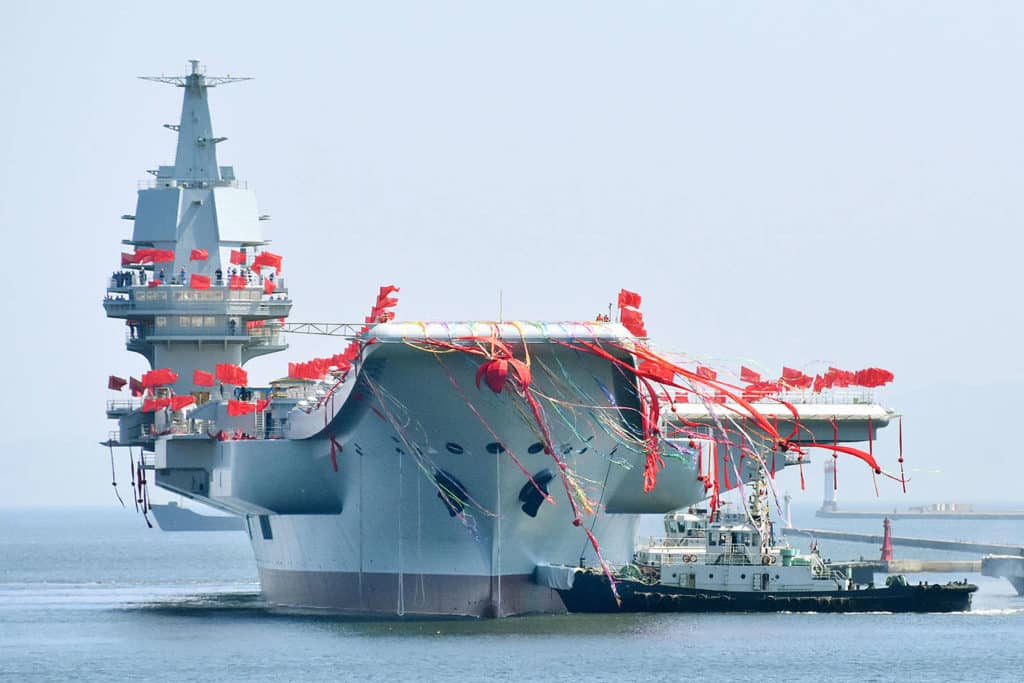
China’s first domestically built aircraft carrier is launched at a shipyard in the northeastern port city of Dalian on April 26, 2017. (Kyodo)
The 001A in brief
Form most analysts that could follow the ship’s construction at Dalian, this is undoubtedly a clone of the Russian Kuznetsov class carrier, a glorified, modernized copy. There was a model of it already available, as the Liaoning. First launched in the USSR as the Varyag, her transfer story alone was amazing. Once achieved at Dalian, the new aircraft carrier became the first ever featured by PLAN, and has since be at the forefront of massive naval force projection, especially in highly strategic contested areas in the Southern China Sea.
The current Shandong is a much improved copy of the Lianong delivered in 2012, also by Dalian. The former Soviet Varyag remained unfinished in Ukraine, was towed through the bosporus and to Asia, officially to be converted as a floating casino. At 304 meters and 65,000 tonnes laden, 2,000 sailors, personnel and air group she is a force to be reckoned with. Her current complement is limited to 24 to 26 J-15 aircraft derived from the Su-27 Flanker, and a dozen helicopters. The Shandong is 315 meters long and 70,000 ton pc, and more importantly forty aircraft, including 30 D-15.
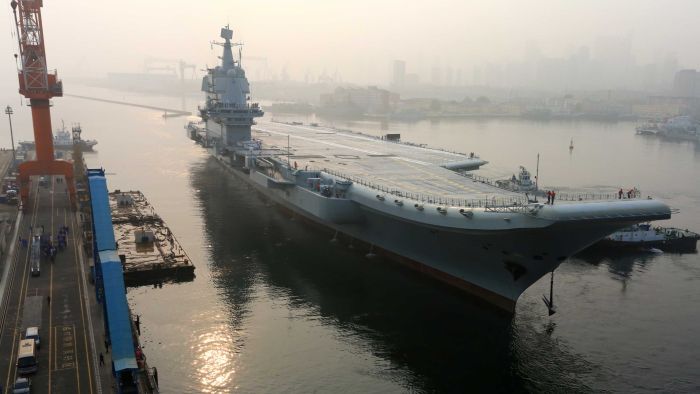
Following the will of the head of state, chairman Xi Jin Ping, Dalian is currently busy with the type 002, which was first revealed in the end of June 2018. The artist’s impression was displayed on TV behind a meeting of Chinese officials, and framed between the Liaoning and Shandong. This 002 would be a CATOBAR with three catapults. Commission is expected in the early 2020s. There is n certitude about it to be conventional or nuclear powered also. Perhaps the example of the British carriers is taken in consideration. In any case the Shandong could now take her place as the center of a task force.
There was no doubt that a second one was needed if China wanted a permanent presence at sea as the center of a task force. That’s the same issue also seeked by Japan, Russia, France and the United Kingdom, the United States still largely ahead with 10 aircraft carriers, included two permanently deployed in Asia, the USS Carl Vinson being recently involved in intimidation maneuvers nearby the North Korean territorial waters.
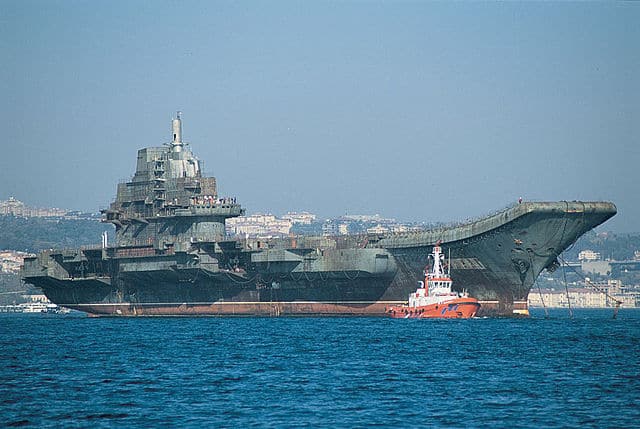
The Varyag, then towed off Istambul, future Liaoning.
The new, still unnamed aircraft carrier (possibly called “Shandong” according to the province she was built in or even “Mao Zedong?”), is about the same size and width than the Liaoning, same characteristic superstructure inherited from the Soviet-era hybrid missile cruiser/aircraft carriers. Contrary to the 1970s Kiev class, the Kuznetsov class (now three ships indirectly with this last one) bears more resemblance with modern aircraft carriers, having comparatively a much larger deck, more catapults, and a much larger hangar, for a capacity of around 50 aircraft, including SU-33 fighter-bombers, largely more effective than the STOVL jets carried in what was a glorified cruiser/helicopter carrier.
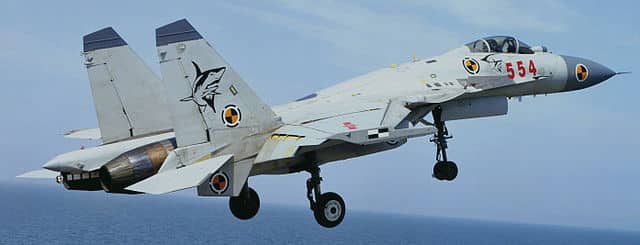
Shenyang J-15 fighter
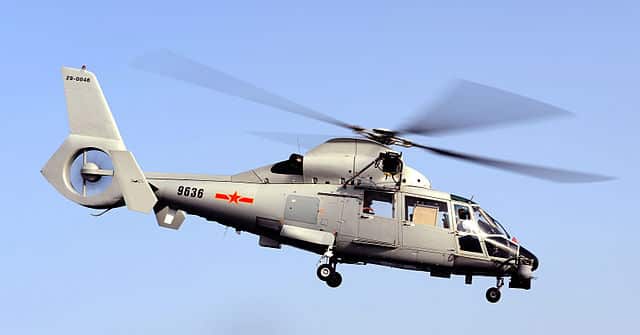
Z9 SAR helicopter
It should be added that the Liaoning mostly performed training missions from 2012, and the PLAN had before that in 1985 purchased the HMAS Melbourne. The carrier was sold to the China United Shipbuilding Company for A$1.4 million, in order to be broken up, but was comprehensively studied and possibly in part reverse-engineered, as part of the top secret carrier development program. The Minsk and Kiev were also purchased and studied.
Development of the 001A
According to state media service Xinhua, initial work on the new ship began in November 2013, and the hull was in drydock by 2015. So a launch in 2017 is relatively quick, although the ship is way off completion, which could occur around 2020. The hull was largely finished by May 2016, the launch taking place in a great burst of mediatic pride on 25 April 2017. The new ship still has to go through fitting out and sea trials before making into service with PLAN. At that time, China would be the only naval power outside the USA to have two “true” aircraft carriers at sea simultaneously, a clear-cut rise in capabilities.
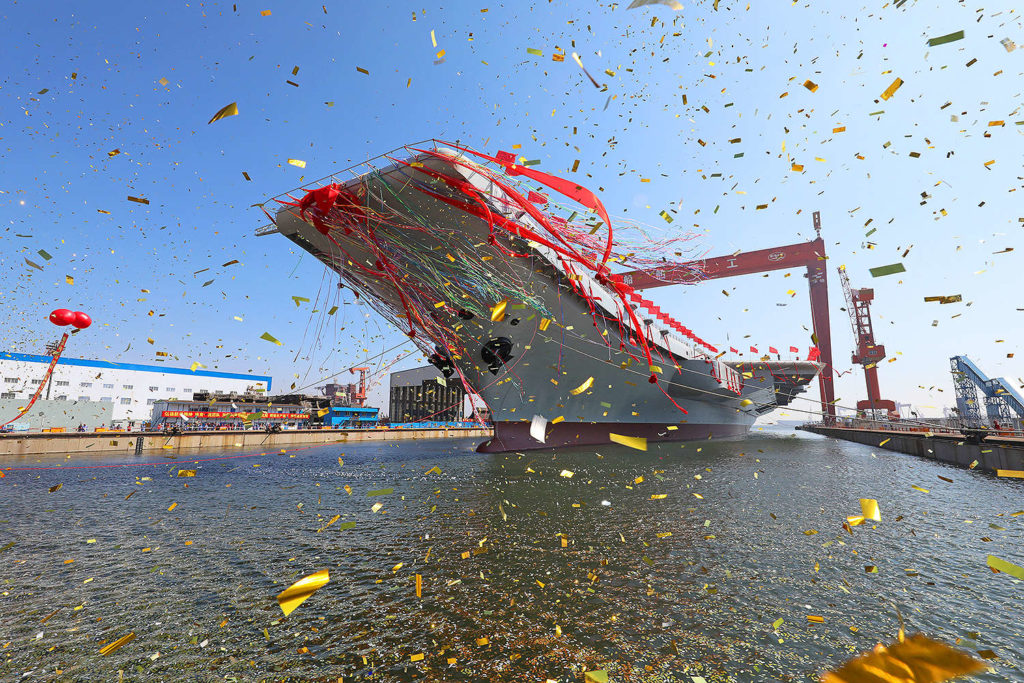
Inauguration at Dalian Shipyard 25, April, 2017
Armament and capabilities
Although little is known yet, the new Chinese aircraft carrier is estimated to carry 30 to 40 aircrafts of all types, including the possibility of a complement slightly larger than the Liaoning: Currently 24 Shenyang J-15 fighters (copy of Russian SU-33), six Changhe Z-18F ASW helicopters, four Changhe Z-18J airborne early warning helicopters (Glorified Super Frelon copy) and two Harbin Z-9C rescue helicopters (copy of the AS365 Dolphin).
According to CSIS, the control tower is approximately 10 percent smaller than that of the Liaoning, and displacement is also a few thousand more, around 8 additional aircraft and optimized internal arrangement.
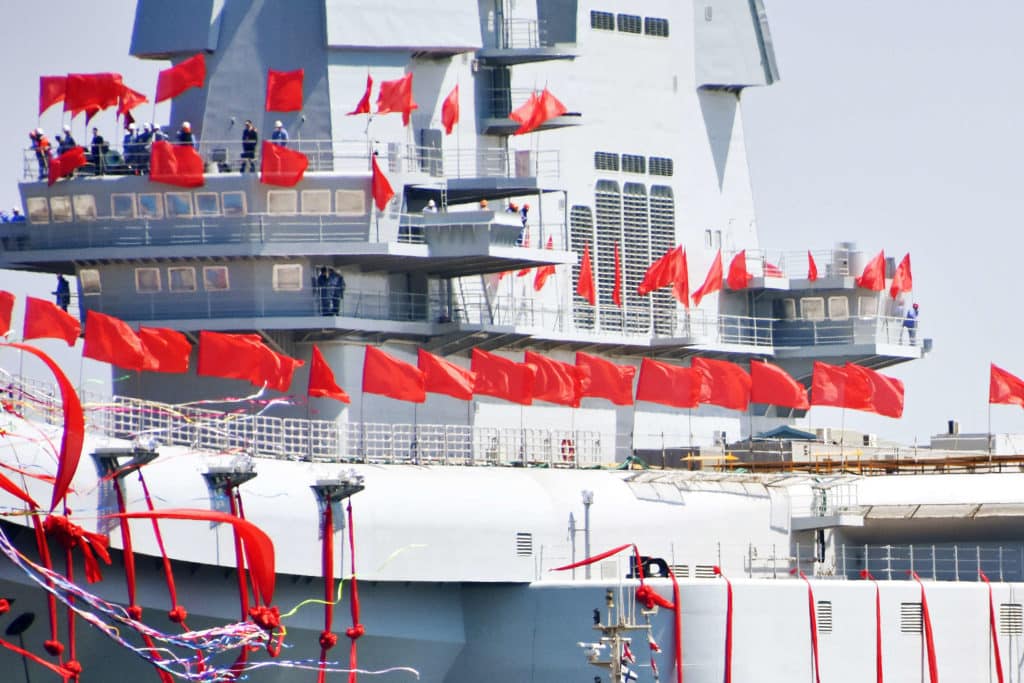
001A island
As defined the ship still is given extra large proper missile capabilities, KJ-88, YJ-83K, and YJ-91 missiles. This means if the escort would be destroyed, the ship still retains a medium-range strike capability well-beyond those of Nimitz-class aircraft carriers, that relies primary on their own air force. In addition the 001A came with improved radar Type 346 S-band AESA system, and increased storage capacity for ammunition and fuel.
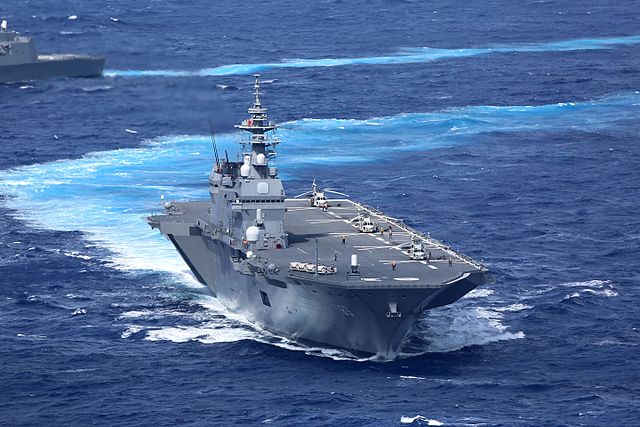
Japanese Izumo “helicopter destroyer”. The latter can deploy about 28 helicopters but also V22 Osprey and F-35A
Other Aircraft Carriers in Asia
China’s blue water navy ambitious programme only is getting started. After the CV16 (Liaoning), CV17 (001A), the CV19 (Type 002, est.2021) and CV20 (Type 003, est.2026?) are already listed, both CATOBAR (standard flat deck take-off). With four task forces, the PLAN would have the potential of ruling the whole pacific ocean, in addition to the nearby Indian ocean, Korea and China seas. Indeed, the US Fleet can deploy only the same number, roughly, of task forces in this sector at a time in peace time.
But that’s with the inaction of traditional, and rising regional naval powers:
Japan: 2 very large Izumo-class and 2 Hyūga-class “helicopter destroyers”
India: INS Vikramaditya, a former Soviet era Kiev hybrid cruiser/aircraft carrier
Thailand: Chakri Naruebet midget aircraft carrier (Spanish-built)
Australia: Canberra class assault aircraft carriers (Spanish built)
Specifications
These are subject of changes and evolution, based on the latest available informations
001A specifications |
|
| Dimensions (est.) | 300 x76 x9 m |
| Displacement | 50,000/70,000 t FL |
| Crew | 2500+ |
| Propulsion | 4 propellers, 4 Steam turbines, 200,000 hp |
| Speed | 32 knots (59 km/h; 37 mph) |
| Range | 4,000 nautical miles |
| Armament | 40 aircraft, see notes |
Naval Encyclopedia plans about PLAN
The Chinese Navy is interesting strategically, and a very “hot” topic. So it will led in the near future to a complete, exhaustive and upgraded review of modern Chinese naval assets, including naval air force capabilities.
Links/Sources
thedrive.com/
Forbes – Comparison infographics with USS G. Ford
About the 001A aircraft carrier (wikipedia)
About the Liaoning
CSIS


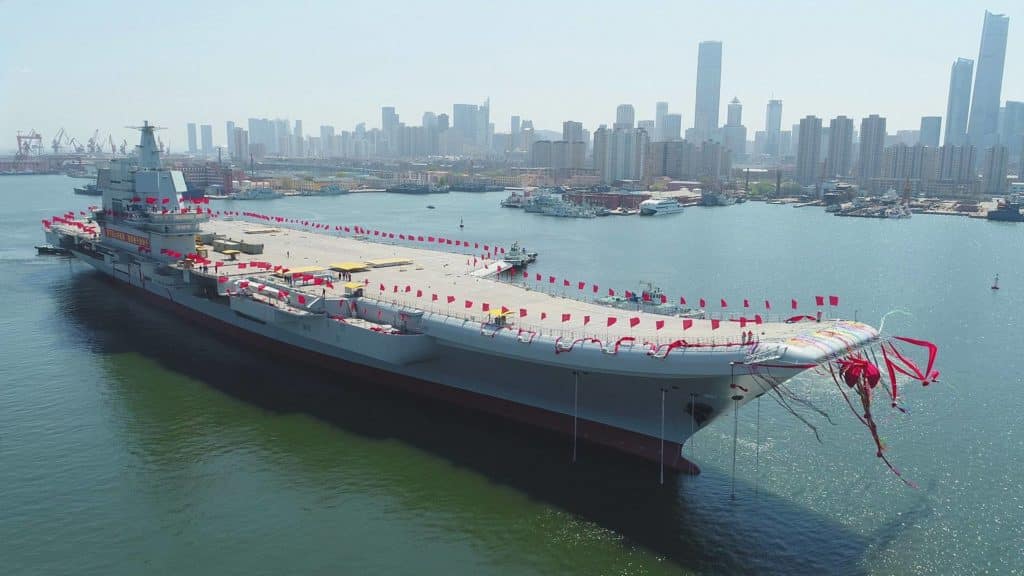
 Latest Facebook Entry -
Latest Facebook Entry -  X(Tweeter) Naval Encyclopedia's deck archive
X(Tweeter) Naval Encyclopedia's deck archive Instagram (@navalencyc)
Instagram (@navalencyc)





 French Navy
French Navy Royal Navy
Royal Navy Russian Navy
Russian Navy Armada Espanola
Armada Espanola Austrian Navy
Austrian Navy K.u.K. Kriegsmarine
K.u.K. Kriegsmarine Dansk Marine
Dansk Marine Nautiko Hellenon
Nautiko Hellenon Koninklije Marine 1870
Koninklije Marine 1870 Marinha do Brasil
Marinha do Brasil Osmanlı Donanması
Osmanlı Donanması Marina Do Peru
Marina Do Peru Marinha do Portugal
Marinha do Portugal Regia Marina 1870
Regia Marina 1870 Nihhon Kaigun 1870
Nihhon Kaigun 1870 Preußische Marine 1870
Preußische Marine 1870 Russkiy Flot 1870
Russkiy Flot 1870 Svenska marinen
Svenska marinen Søværnet
Søværnet Union Navy
Union Navy Confederate Navy
Confederate Navy Armada de Argentina
Armada de Argentina Imperial Chinese Navy
Imperial Chinese Navy Marinha do Portugal
Marinha do Portugal Mexico
Mexico Kaiserliche Marine
Kaiserliche Marine 1898 US Navy
1898 US Navy Sovietskiy Flot
Sovietskiy Flot Royal Canadian Navy
Royal Canadian Navy Royal Australian Navy
Royal Australian Navy RNZN Fleet
RNZN Fleet Chinese Navy 1937
Chinese Navy 1937 Kriegsmarine
Kriegsmarine Chilean Navy
Chilean Navy Danish Navy
Danish Navy Finnish Navy
Finnish Navy Hellenic Navy
Hellenic Navy Polish Navy
Polish Navy Romanian Navy
Romanian Navy Turkish Navy
Turkish Navy Royal Yugoslav Navy
Royal Yugoslav Navy Royal Thai Navy
Royal Thai Navy Minor Navies
Minor Navies Albania
Albania Austria
Austria Belgium
Belgium Columbia
Columbia Costa Rica
Costa Rica Cuba
Cuba Czechoslovakia
Czechoslovakia Dominican Republic
Dominican Republic Haiti
Haiti Hungary
Hungary Honduras
Honduras Estonia
Estonia Iceland
Iceland Eire
Eire Equador
Equador Iran
Iran Iraq
Iraq Latvia
Latvia Liberia
Liberia Lithuania
Lithuania Mandchukuo
Mandchukuo Morocco
Morocco Nicaragua
Nicaragua Persia
Persia San Salvador
San Salvador Sarawak
Sarawak Uruguay
Uruguay Venezuela
Venezuela Zanzibar
Zanzibar Warsaw Pact Navies
Warsaw Pact Navies Bulgaria
Bulgaria Hungary
Hungary

 Bundesmarine
Bundesmarine Dutch Navy
Dutch Navy Hellenic Navy
Hellenic Navy Marina Militare
Marina Militare Yugoslav Navy
Yugoslav Navy Chinese Navy
Chinese Navy Indian Navy
Indian Navy Indonesian Navy
Indonesian Navy JMSDF
JMSDF North Korean Navy
North Korean Navy Pakistani Navy
Pakistani Navy Philippines Navy
Philippines Navy ROKN
ROKN Rep. of Singapore Navy
Rep. of Singapore Navy Taiwanese Navy
Taiwanese Navy IDF Navy
IDF Navy Saudi Navy
Saudi Navy Royal New Zealand Navy
Royal New Zealand Navy Egyptian Navy
Egyptian Navy South African Navy
South African Navy






























 Ukrainian Navy
Ukrainian Navy dbodesign
dbodesign